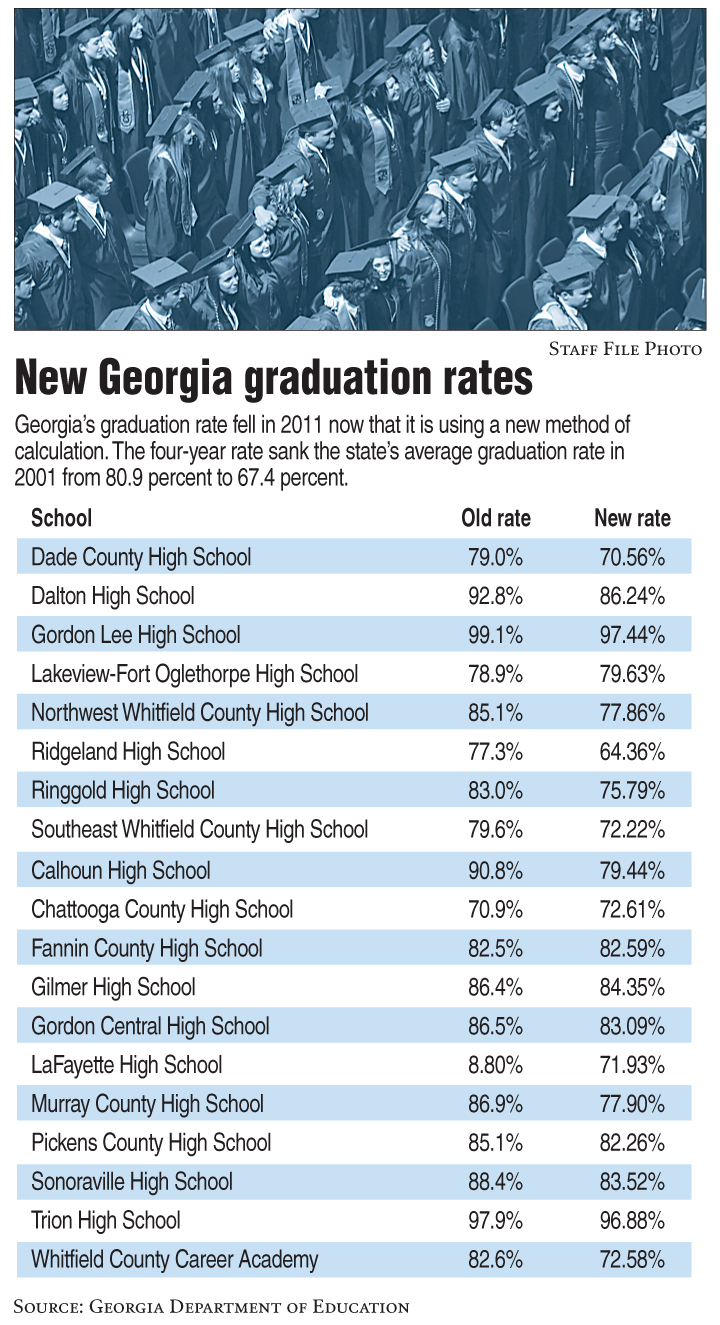Georgia graduation rate falls under new measure
Friday, January 1, 1904
Georgia's high school graduation rate dropped more than 13 percentage points under a new, tougher measurement.
While the 2011 drop from 80.9 percent to 67.4 percent may look staggering, Georgia educators say they expected the dip, which now shows a more realistic picture of how many students are finishing high school on time.
The new method of calculating graduation rates -- known as the adjusted cohort rate -- includes only students who graduate within four years, leaving out those who may take longer or move over to GED or other adult-education programs. This changes the calculation to emphasize on-time graduations though the number of students graduating hasn't necessarily changed.
In 2005, all 50 members of the National Governor's Association agreed to move to the new graduation measure to make state-by-state data more comparable. In the past, states had varying ways of determining their own graduation rates.
Tennessee moved to the new calculation last year, officials said, and had a small drop from 86.1 percent to a state average graduation rate of 85.5 percent.
While some Northwest Georgia schools still made incremental gains despite the recalculation, many high schools in the region had dips in their 2011 graduation rates.
Dade County High School Principal Josh Ingles said the new measure provides a more accurate picture. But that picture isn't always pretty. Dade County High's graduation rate dropped from 79 percent to 70.59 percent.
"It creates a greater sense of urgency," Ingles said.
The school tries to provide as much support as possible to keep struggling students in school, he said, but that's tough when some students may want to go into a GED program or go on to learn a technical skill.
"That is a success for that particular child," he said, "but from a school standpoint, it's the equivalent of a dropout."
About 35 states have moved to the new graduation-rate measure and most are expected to be on board by the end of this year, said Joanna Fox, deputy director of the Everyone Graduates Center, the nonprofit research arm of the Center for Social Organization of Schools at Johns Hopkins University.
Past measures relied on averages and estimates, but Fox said the new measure actually tracks one group of students over four years, differentiating between those who are taking longer or repeating a grade.
"You can physically track a student from ninth grade to 12th grade," she said.
Catoosa County Schools started a graduation task force in 2006 to study why students weren't completing high school. The group found that high absenteeism, caused by family or work obligations, caused students to get behind in school work and ultimately drop out.
"Many of our high school students have adult responsibilities that make it difficult for them to attend school regularly," Superintendent Denia Reese said in a prepared statement.
Catoosa implemented credit recovery programs and now provides flexible schedules to better meet students' needs at the Performance Learning Center, an alternative high school. The county's average graduation rate dropped from 82.4 percent to 76.4 percent with the new measurement, though Reese noted the graduation rate has been trending up.

